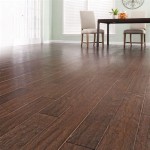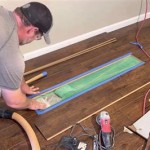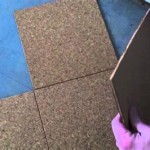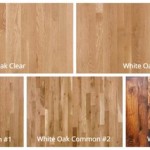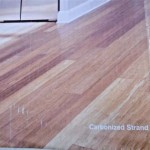Advantages of Granite Flooring
Granite flooring has long been a popular choice for both residential and commercial spaces due to its inherent durability, aesthetic appeal, and longevity. This natural stone, formed deep within the Earth's crust, offers a unique combination of features that set it apart from other flooring materials. This article will delve into the multifaceted advantages of granite flooring, exploring its resilience, visual characteristics, maintenance requirements, and environmental considerations.
Durability and Longevity
One of the most significant advantages of granite flooring is its exceptional durability. Granite is an igneous rock composed primarily of quartz, feldspar, and mica, minerals known for their hardness and resistance to wear. This inherent hardness translates directly to its performance as a flooring material.
Granite is highly resistant to scratches, chips, and dents. This makes it an ideal choice for high-traffic areas such as hallways, kitchens, and commercial lobbies where the flooring is subjected to constant use and potential impact. Unlike softer materials like wood or linoleum, granite can withstand the rigors of daily life without showing signs of wear and tear.
Furthermore, granite is impervious to water damage when properly sealed. This resistance to moisture makes it suitable for bathrooms, kitchens, and other areas prone to spills and humidity. The dense structure of granite prevents water from penetrating the surface, minimizing the risk of staining, mold growth, and structural damage to the subfloor.
The longevity of granite flooring is another compelling reason for its widespread adoption. With proper installation and maintenance, granite can last for decades, even centuries, without losing its structural integrity or aesthetic appeal. This long lifespan makes granite a cost-effective investment in the long run, as it eliminates the need for frequent replacements or repairs.
The inherent strength of granite also provides excellent support and stability. It can withstand heavy loads without cracking or buckling, making it suitable for use in areas where heavy furniture or equipment is present. This structural stability ensures that the flooring remains level and secure, contributing to the overall safety and comfort of the space.
Beyond its physical properties, granite's resistance to chemical damage is also noteworthy. It is generally unaffected by household cleaning products, acids, and alkalis, provided they are not excessively harsh or abrasive. This chemical resistance simplifies cleaning and maintenance, allowing for the use of a wider range of cleaning agents without fear of damaging the flooring.
Aesthetic Versatility and Visual Appeal
Granite flooring offers a wide range of aesthetic possibilities, allowing for the creation of visually stunning and unique spaces. The natural variations in color, pattern, and texture found in granite contribute to its distinctive beauty. Each slab of granite is unique, ensuring that no two floors are exactly alike.
Granite is available in a vast array of colors, ranging from light shades of white and gray to darker tones of black, brown, and red. These colors are determined by the mineral composition of the rock and can vary widely depending on the quarry from which the granite was extracted. This diverse color palette allows for seamless integration with a wide range of interior design styles.
In addition to color, granite also exhibits a variety of patterns and textures. Some granite slabs have a uniform grain, while others feature intricate veining and swirling patterns. These natural variations add depth and visual interest to the flooring, creating a sense of sophistication and elegance.
The surface finish of granite flooring can also be customized to achieve different aesthetic effects. Polished granite has a glossy, reflective surface that enhances the natural colors and patterns of the stone. Honed granite has a matte finish that provides a more subtle and understated look. Flamed granite has a textured surface that provides excellent slip resistance, making it suitable for outdoor applications.
Granite flooring can be used to create a variety of design styles, from traditional to contemporary. Its versatility allows it to complement a wide range of architectural features and interior decor. Whether used in a minimalist modern space or a classic Victorian home, granite flooring can enhance the overall aesthetic appeal of the environment.
Furthermore, granite can be cut and shaped into a variety of sizes and patterns, allowing for creative installation options. Large format tiles can create a seamless and expansive look, while smaller tiles can be arranged in intricate patterns to add visual interest. Borders, inlays, and medallions can also be incorporated to further customize the flooring design.
Maintenance and Care
While granite is a durable and long-lasting material, proper maintenance is essential to preserve its beauty and extend its lifespan. Fortunately, granite flooring is relatively easy to care for, requiring only simple and routine cleaning to keep it looking its best.
Regular sweeping or vacuuming is recommended to remove loose dirt and debris from the surface of the flooring. This prevents scratches and abrasions caused by dirt particles being ground into the surface. A soft-bristled broom or a vacuum cleaner with a floor attachment is ideal for this purpose.
For more thorough cleaning, granite flooring can be mopped with a mild detergent and water. It is important to use a pH-neutral cleaner that is specifically designed for use on natural stone. Avoid using abrasive cleaners, bleach, or acidic solutions, as these can damage the surface of the granite.
Spills should be cleaned up immediately to prevent staining. Granite is generally stain-resistant, but certain substances, such as oil, grease, and red wine, can potentially penetrate the surface if left to sit for an extended period. Blot the spill with a clean cloth and then clean the area with a mild detergent and water.
Sealing is an important part of granite flooring maintenance. A sealant is a protective coating that is applied to the surface of the granite to prevent water and other liquids from penetrating the stone. Sealing should be done periodically, typically every one to three years, depending on the type of sealant used and the level of traffic in the area.
Professional cleaning and restoration services can also be used to maintain the appearance of granite flooring. These services can remove stubborn stains, repair minor scratches and chips, and polish the surface to restore its original luster. Regular professional maintenance can help extend the lifespan of the flooring and keep it looking its best for years to come.
In summary, the advantages of granite flooring are numerous and compelling. Its durability, aesthetic versatility, and relatively simple maintenance requirements make it a valuable and attractive flooring option for a wide range of applications. While the initial cost may be higher than some other flooring materials, the long-term benefits and enduring beauty of granite make it a worthwhile investment.

Advantages Of Granite Flooring Tiles

5 Benefits Of Granite Flooring For Home Alliance Granimarmo

Benefits Of Granite Flooring For Your Home Chandan Marbles

Granite Flooring Advantages And Disadvantages

Granite Flooring Advantages And Disadvantages

5 Advantages Of Having Granite Flooring In Your Home Rk Marble Blog

5 Advantages Of Having Granite Flooring In Your Home

5 Benefits Of Granite Flooring For Home Alliance Granimarmo

Advantages And Disadvantages Of Granite Flooring Paetani Buildwell Pvt Ltd Pbpl Blog

5 Advantages Of Having Granite Flooring In Your Home Rk Marble Blog
Related Posts

